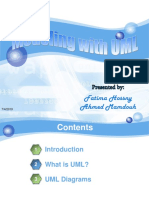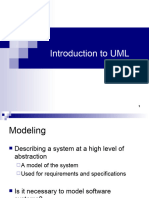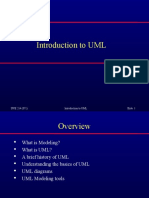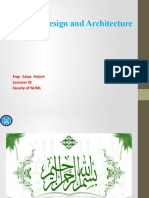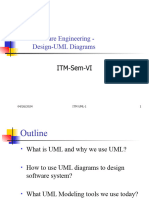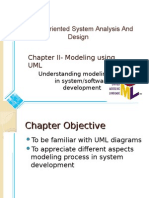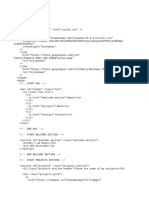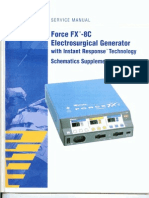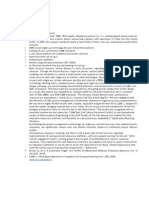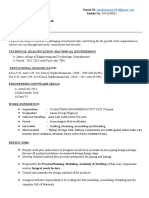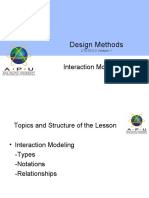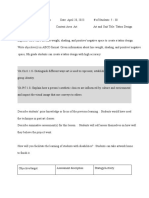0% found this document useful (0 votes)
89 views9 pagesUML Basics & Diagrams Guide
This document introduces the Unified Modeling Language (UML) as a standard modeling language for software engineering. It discusses why modeling is important, defines UML and its benefits, and outlines the main UML diagram types including use case diagrams, class diagrams, sequence diagrams, activity diagrams, component diagrams, and deployment diagrams. The document also provides an overview of the UML modeling process and how these different diagram types are used at different stages from requirements to design to implementation.
Uploaded by
Steven KhalifeCopyright
© © All Rights Reserved
We take content rights seriously. If you suspect this is your content, claim it here.
Available Formats
Download as PDF, TXT or read online on Scribd
0% found this document useful (0 votes)
89 views9 pagesUML Basics & Diagrams Guide
This document introduces the Unified Modeling Language (UML) as a standard modeling language for software engineering. It discusses why modeling is important, defines UML and its benefits, and outlines the main UML diagram types including use case diagrams, class diagrams, sequence diagrams, activity diagrams, component diagrams, and deployment diagrams. The document also provides an overview of the UML modeling process and how these different diagram types are used at different stages from requirements to design to implementation.
Uploaded by
Steven KhalifeCopyright
© © All Rights Reserved
We take content rights seriously. If you suspect this is your content, claim it here.
Available Formats
Download as PDF, TXT or read online on Scribd
/ 9










